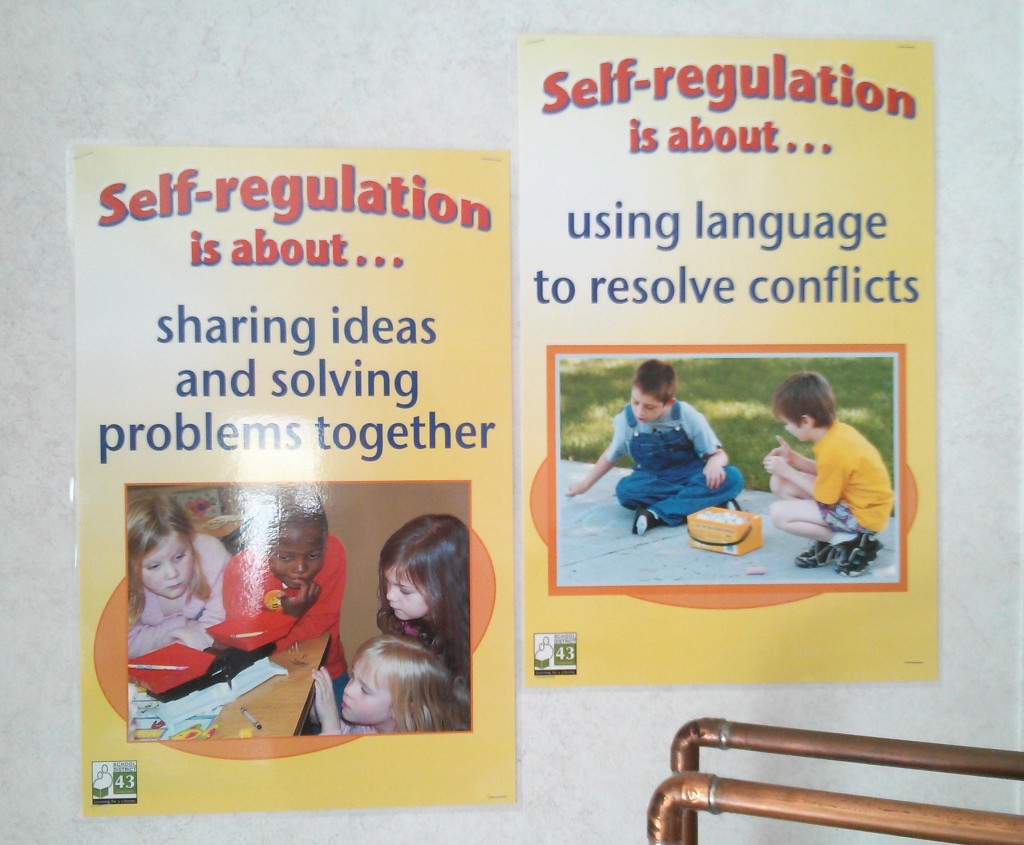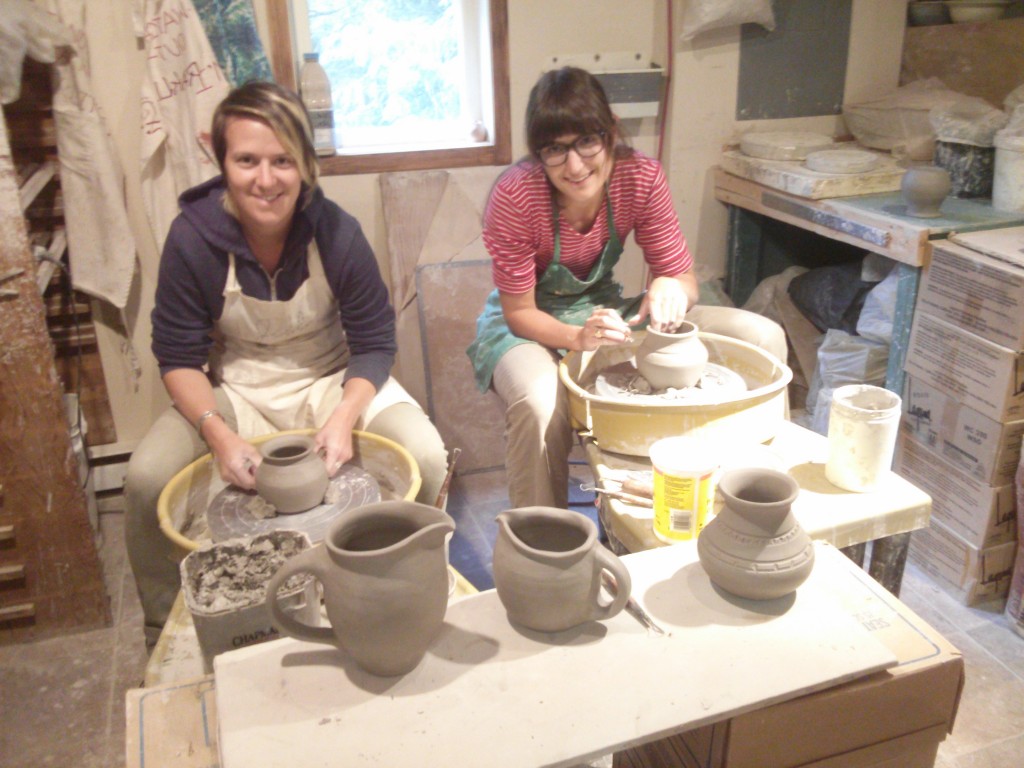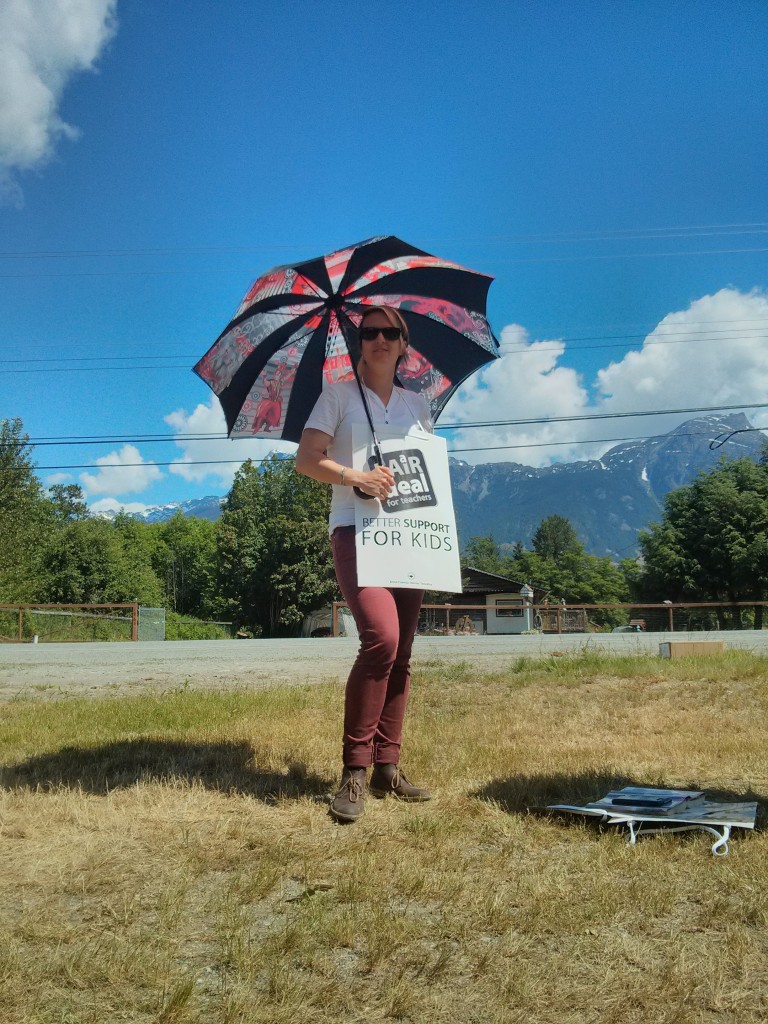Despite the strike…
We spent the week at Acwsalcta, the band school at 4 Mile between Hagensborg and Bella Coola. What an incredible school. The building and setting themselves were impressive. The morning started with a whole-school assembly, in which all the staff and students arrange themselves in a circle. Announcement are made, songs are sung, and the school starts off the week as a community rooted in the Nuxalk culture. It is a benefit of being a small school that everyone is able to form a circle in which everyone is visible and included. Megan and I were introduced to the school, just one of the ways we were made to feel welcome from the very beginning. This week in the Monday assembly Barry, the principle, passed me the drum and had me drum along in time. Wow. The Nuxalk rhythms are beautiful, though sometimes unpredictable to the untrained ear. I had to be careful not to beat out of time.
The morning started with a whole-school assembly, in which all the staff and students arrange themselves in a circle. Announcement are made, songs are sung, and the school starts off the week as a community rooted in the Nuxalk culture. It is a benefit of being a small school that everyone is able to form a circle in which everyone is visible and included. Megan and I were introduced to the school, just one of the ways we were made to feel welcome from the very beginning. This week in the Monday assembly Barry, the principle, passed me the drum and had me drum along in time. Wow. The Nuxalk rhythms are beautiful, though sometimes unpredictable to the untrained ear. I had to be careful not to beat out of time.
I spent the first day in a grade 2 classroom. The classes are generally small in Bella Coola anyway, but it being the end of the year classes were even smaller than usual. There are advantages and disadvantages to tiny classes in terms of what can be accomplished. As well, most of the classes have a TA in them. Imagine! Later in the week I worked in the Kindergarten classroom, which had a full class, but 2 full time TA’s! Amazing! Imagine the possibilities for differentiation! When the students were working on language stations, this meant that they were able to have guidance at 4 of the stations while I was there… someone to help them keep focused and apply strategies when they got stuck. As well, this meant that there were people available for pull-outs. I worked with two students during their Nuxalk language class, pulling them out to work on their letters.
At Acwsalcta they use the ReadWell program, and the teacher I was working with happened to be the literacy coordinator for the school. I have now had a chance to peruse the program’s books and activities as well as observe it being used in the classroom and one-on-one as a reading recovery program. It is thorough, and highly repetitive. I worry, though, that there is not enough kinesthetic learning in the program. There are lots of worksheets, but there do not appear to be a lot of word sorts or tactile materials. Perhaps those thing could be incorporated on top of the program to enhance it. However, one of the major benefits at Acwsalcta isthat the entire school is using ReadWell, which provides consistency for students as well as the opportunity to create leveled reading groups across classes.

Meet Carl, the Kindergarten class pet.
I applied for the kindergarten position at Acwalcta, and so I thought it would be a good a idea to visit the preschool to get to know about where the students come from pre-kindergarten and to meet some of the students who will be moving up into that class. It was delightful. It is such a shift working with this age-group as opposed to my grade 6/7 practicum class, because at that age students are peer-focussed, but in the preschool and K age range they are not even really playing together… just playing near each other. It is fascinating to findthat all of the things I’ve read about the planes of development in psych and education courses are observable in the classroom.
I saw signs of a focus on self-regulated learning throughout the school! The blue, green, yellow, and red zones were a common language throughout the school, which is so beneficial for keeping language consistent and understandable for students. I learned about the zones in a Pro-D conference on self regulation I attended last summer with Stuart Shanker, so it was really neat to see that implemented in the classroom. Even in the preschool there were signs of a focus self-regulation. 
 This was the week of graduations. I attended the grade 7 grad, the kindergarten grad, and the preschool grad. They were all beautiful, though the K’s I was with were a bit fidgety through both their own and the grade 7’s grads. The pre-schoolers made their own grad hats, complete with glitter, feathers and yarn tassels. There was drumming and singing, and many proud families attended. For some students, 5 generations of family were there.Today the pre-school children came to the farm we are living at and met the animals. Sadly, I was in a phone interview for much of their visit, but they were in good hands with farmers’ Pat and Jill.
This was the week of graduations. I attended the grade 7 grad, the kindergarten grad, and the preschool grad. They were all beautiful, though the K’s I was with were a bit fidgety through both their own and the grade 7’s grads. The pre-schoolers made their own grad hats, complete with glitter, feathers and yarn tassels. There was drumming and singing, and many proud families attended. For some students, 5 generations of family were there.Today the pre-school children came to the farm we are living at and met the animals. Sadly, I was in a phone interview for much of their visit, but they were in good hands with farmers’ Pat and Jill.
We have just 2 days remaining at the school, as Thursday is the final day at Acwsalcta. I hope to get a chance to see some more of the valley before I go. There are SO MANY mountains to climb! Also, the museum just opened. Last week we got to see the petroglyphs. You are supposed to have a guide when visiting them, as the area is considered sacred and it is on Nuxalk land. We were accompanied by Dez, a teacher at Acwsalcta who told us some of the stories, including one of my favorites — Raven brings the light.
Oh! As well, tomorrow is the last lesson in the pottery series we are taking with Ernest Hall, a local artist and tourism advocate in the valley. We will be glazing our pots so that they can be fired before we leave. With lifelong learning in mind, we decided to take these lessons when I ran into Ernest on our first day in the valley at the post office. Furthermore, in speaking to rural educators, I am finding that having a diverse skill set is important for creating a variety of programs for students. So, who knows… perhaps I will one day be the Bella Coola ceramics teacher? One can dream.










